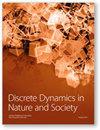Carbon Emission Performance of Robot Application: Influencing Mechanisms and Heterogeneity Characteristics
IF 1.2
4区 数学
Q3 MATHEMATICS, INTERDISCIPLINARY APPLICATIONS
引用次数: 0
Abstract
With the new round of technological revolution and industrial change, industrial robots have an important role to play in the fight against climate change and in achieving the goal of “carbon peaking and carbon neutrality.” Based on the panel data of the application level of industrial robots in Shanghai and Shenzhen A-share listed companies from 2011 to 2019, this study examines the impact of industrial robots on carbon emission performance and discusses specific ways industrial robots can affect carbon emission performance. The results show that industrial robots can significantly improve carbon emission performance. Mechanism analysis shows that industrial robots can improve carbon emission performance through productivity and competition effects. Heterogeneity analysis shows that the application effect of industrial robots varies based on enterprise nature, regional location, and carbon emission intensity. The study can make potential contributions. First, this study systematically analyzes the impact of artificial intelligence technology on carbon emissions from the perspective of carbon emission performance, which can supplement the research on carbon emission performance. Second, this study calculates application levels of artificial intelligence technology at the enterprise level and uses panel and linear intermediary effect models to analyze the transmission mechanism between the application of artificial intelligence technology and carbon emission performance. Third, the heterogeneity analysis results can provide empirical support for formulating differentiated artificial intelligence carbon reduction strategies and be used as a reference to further promote the green development of artificial intelligence technology.机器人应用的碳排放性能:影响机制和异质性特征
随着新一轮技术革命和产业变革的到来,工业机器人在应对气候变化、实现“碳峰值和碳中和”目标方面发挥着重要作用。本研究基于2011 - 2019年沪深两市a股上市公司工业机器人应用水平的面板数据,检验工业机器人对碳排放绩效的影响,并探讨工业机器人影响碳排放绩效的具体方式。结果表明,工业机器人可以显著提高碳排放性能。机理分析表明,工业机器人可以通过生产率效应和竞争效应提高碳排放绩效。异质性分析表明,工业机器人的应用效果因企业性质、区域区位和碳排放强度的不同而存在差异。这项研究可以做出潜在贡献。首先,本研究从碳排放绩效的角度系统分析了人工智能技术对碳排放的影响,可以对碳排放绩效研究进行补充。其次,计算人工智能技术在企业层面的应用水平,利用面板模型和线性中介效应模型分析人工智能技术应用与碳排放绩效之间的传导机制。第三,异质性分析结果可为制定差别化人工智能减碳策略提供实证支持,为进一步推动人工智能技术绿色发展提供参考。
本文章由计算机程序翻译,如有差异,请以英文原文为准。
求助全文
约1分钟内获得全文
求助全文
来源期刊

Discrete Dynamics in Nature and Society
综合性期刊-数学跨学科应用
CiteScore
3.00
自引率
0.00%
发文量
598
审稿时长
3 months
期刊介绍:
The main objective of Discrete Dynamics in Nature and Society is to foster links between basic and applied research relating to discrete dynamics of complex systems encountered in the natural and social sciences. The journal intends to stimulate publications directed to the analyses of computer generated solutions and chaotic in particular, correctness of numerical procedures, chaos synchronization and control, discrete optimization methods among other related topics. The journal provides a channel of communication between scientists and practitioners working in the field of complex systems analysis and will stimulate the development and use of discrete dynamical approach.
 求助内容:
求助内容: 应助结果提醒方式:
应助结果提醒方式:


